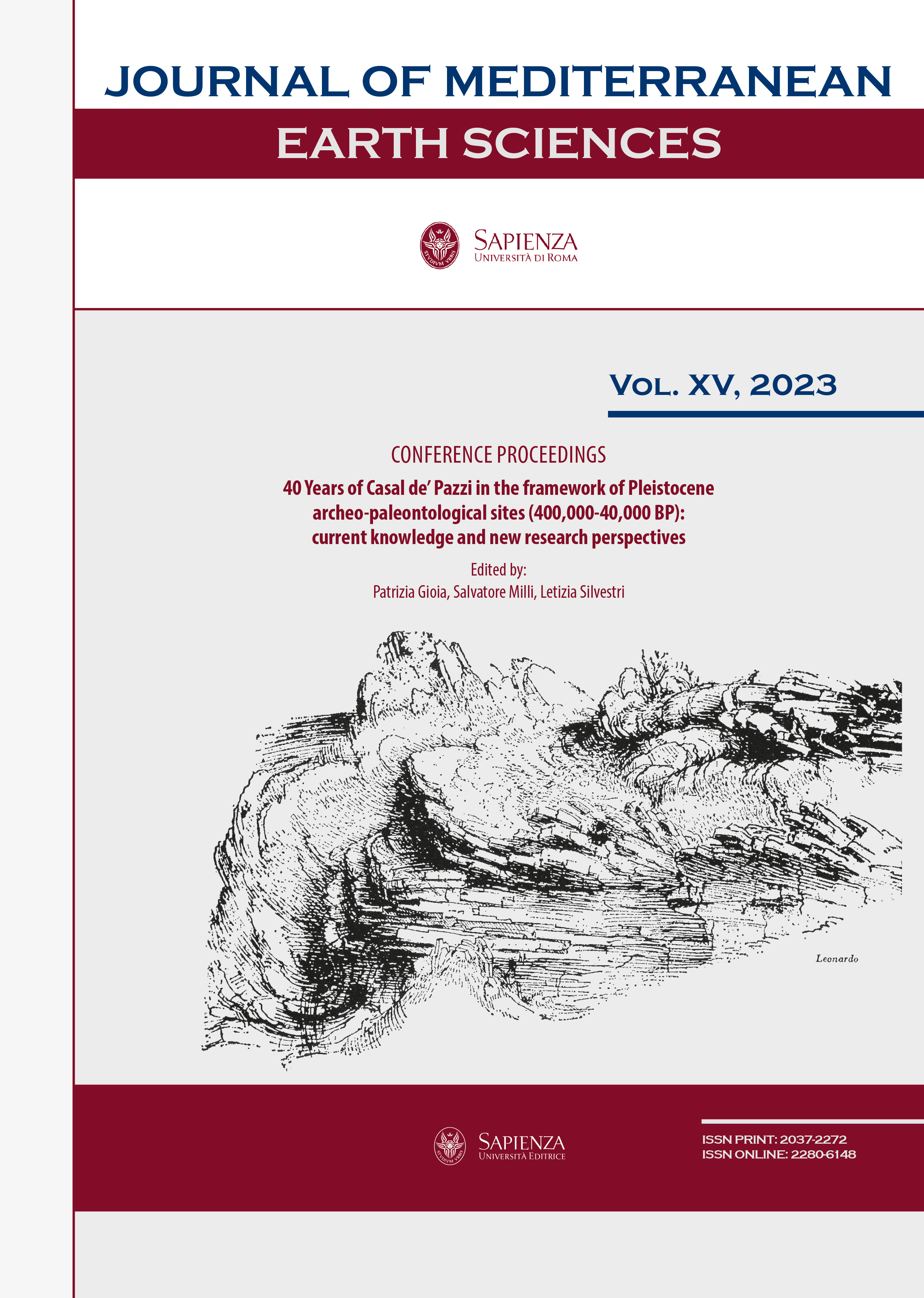Fontana Ranuccio (excavations 2019-2022) and Colle Marino (excavations 2020-2021): Middle Pleistocene chronostratigraphic evidence of the earliest inhabitants in the Anagni basin
DOI:
https://doi.org/10.13133/2280-6148/18064Abstract
Recent fieldwork of the Istituto Italiano di Paleontologia Umana in the Anagni basin (Latin Valley, southern Latium, central Italy) has provided new insights into the dynamics of human settlement and adaptation in this area during the Middle Pleistocene. This paper summarizes the still partially unpublished data on the chronostratigraphy of two important prehistoric sites: Fontana Ranuccio, dating from about 400,000 years ago, and Colle Marino, whose lithic industry has so far been attributed to an early stage of the Middle Pleistocene. At Fontana Ranuccio, stratigraphic studies highlighted the depositional dynamics and the processes involved in the formation of the archeological unit, consisting of partly reworked volcanic material, which can be now divided into distinct sub-units. At Colle Marino, a 35-meter-deep core drilling and an excavation campaign allowed us to verify the nature and provenance of lithic artifacts found on the surface in past decades. Radiometric analyses dated these artifacts from about 700,000 years ago.
Downloads
Published
How to Cite
License
The submission has not been previously published, nor is it before another journal for consideration (or an explanation has been provided in Comments to the Editor).


